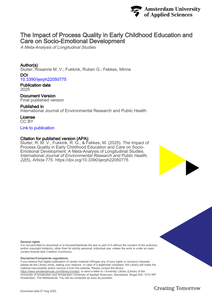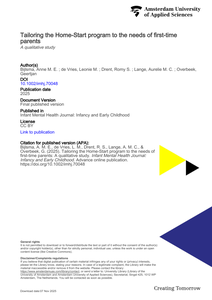BACKGROUNDS:Alcohol use among adolescents has become a major public health problem in the past decade and has large short- and long-term consequences on their health. The aim of this systematic review was to provide an overview of longitudinal cohort studies that have analyzed the association between the parent-child relationship (PCR) and change in alcohol use during adolescence.METHODS: A search of the literature from 1985 to July 2011 was conducted in Medline, PsycINFO, and EMBASE in order to identify longitudinal, general population studies regarding the influence of the PCR on alcohol use during adolescence. The studies were screened, and the quality of the relevant studies was assessed. A best-evidence synthesis was used to summarize the results.RESULTS: Twenty-eight relevant studies were identified. Five studies found that a negative PCR was associated with higher levels of alcohol use. Another seven papers only found this association for certain subgroups such as boys or girls, or a specific age group. The remaining sixteen studies did not find any association.CONCLUSIONS: We found weak evidence for a prospective association between the PCR and adolescent alcohol use. Further research to the association of the PCR with several types of alcohol use (e.g., initiation or abuse) and to the potential reversed causality of the PCR and alcohol use is required.
MULTIFILE

We used a validated agent-based model—Socio-Emotional CONcern DynamicS (SECONDS)—to model real-time playful interaction between a child diagnosed with Autism Spectrum Disorders (ASD) and its parent. SECONDS provides a real-time (second-by-second) virtual environment that could be used for clinical trials and testingprocess-orientedexplanationsofASDsymptomatology.Weconductednumerical experiments with SECONDS (1) for internal model validation comparing two parental behavioral strategies for stimulating social development in ASD (play-centered vs. initiative-centered) and (2) for empirical case-based model validation. We compared 2,000 simulated play sessions of two particular dyads with (second-by-second) time-series observations within 29 play sessions of a real parent-child dyad with ASD on six variables related to maintaining and initiating play. Overall, both simuladistributions. Given the idiosyncratic behaviors expected in ASD, the observed correspondence is non-trivial. Our results demonstrate the applicability of SECONDS to parent-child dyads in ASD. In the future, SECONDS could help design interventions for parental care in ASDted dyads provided a better fit to the observed dyad than reference null
DOCUMENT

Objectives: Promoting unstructured outside play is a promising vehicle to increase children’s physical activity (PA). This study investigates if factors of the social environment moderate the relationship between the perceived physical environment and outside play. Study design: 1875 parents from the KOALA Birth Cohort Study reported on their child’s outside play around age five years, and 1516 parents around age seven years. Linear mixed model analyses were performed to evaluate (moderating) relationships among factors of the social environment (parenting influences and social capital), the perceived physical environment, and outside play at age five and seven. Season was entered as a random factor in these analyses. Results: Accessibility of PA facilities, positive parental attitude towards PA and social capital were associated with more outside play, while parental concern and restriction of screen time were related with less outside play. We found two significant interactions; both involving parent perceived responsibility towards child PA participation. Conclusion: Although we found a limited number of interactions, this study demonstrated that the impact of the perceived physical environment may differ across levels of parent responsibility.
MULTIFILE

Background Parents’ play an essential role in Parent–Child Interaction Therapy (PCIT) as the primary agent of intervention with their child. Unfortunately, speech and language therapists (SLTs) report that parents’ engagement is challenging when conducting PCIT. Although focusing on and stimulating the engagement of parents, when needed, can increase the success of PCIT, little is known about what factors influence parent engagement. Aims To explore SLTs’ views about the factors that facilitate or pose barriers to parents’ engagement in PCIT. Methods & Procedures A secondary analysis of 10 interview transcripts about SLTs’ views on delivering PCIT with parents of children with developmental language disorder (DLD) was conducted. Codes from the original analysis where checked for their relevance to parents’ engagement by the first author. Potential themes were identified iteratively with all authors. Outcomes & Results Four themes were identified in the SLTs’ description of their experiences with the engagement of parents: mutual understanding, creating a constructive relationship between the SLT and parent, parental empowerment, and barriers. It became clear that SLTs were focusing on different aspects of engagement. Conclusions & Implications This study makes an initial contribution to our understanding of SLTs’ view of parents’ engagement and about what stimulates parent engagement or effects disengagement. SLTs play an important role in supporting parents to engage and stay engaged with therapy. Training SLTs on how best to engage parents, focusing on mutual understanding, creating constructive relationships between the SLT and parent, parental empowerment, and barriers, is necessary. However, more research is needed on how to train relevant skills in SLTs. Clearer definitions of engagement would improve understanding and judgements about how best to support parents.
LINK
Background. A number of parenting programs, aimed at improving parenting competencies, have recently been adapted or designed with the use of online technologies. Although web-based services have been claimed to hold promise for parent support, a meta-analytic review of online parenting interventions is lacking. Method. A systematic review was undertaken of studies (n = 19), published between 2000 and 2010, that describe parenting programs of which the primary components were delivered online. Seven programs were adaptations of traditional, mostly evidencebased, parenting interventions, using the unique opportunities of internet technology. Twelve studies (with in total 54 outcomes, Ntot parents = 1,615 and Ntot children = 740) were included in a meta-analysis. Results. The meta-analysis showed a statistically signifi cant medium effect across parents outcomes (ES = 0.67; se = 0.25) and child outcomes (ES = 0.42; se = 0.15). Conclusions. The results of this review show that web-based parenting programs with new technologies offer opportunities for sharing social support, consulting professionals and training parental competencies. The metaanalytic results show that guided and self-guided online interventions can make a signifi cant positive contribution for parents and children. The relation with other metaanalyses in the domains of parent education and web-based interventions is discussed.
LINK
Infants attend daycare at an early age, which raises questions about children's sensitivity to the childcare environment and the role of different temperamental traits in their development in the early years. In a two-year longitudinal study with parent- and caregiver-reported data for Dutch children at the age of 1 and 2 years (120 children from 92 groups), we explored fine-grained dimensions of negative affect and their relationship with socio-emotional functioning. Especially shyness, frustration and soothability proved robust predictors of socio-emotional development across parent- and caregiver-reported data with both concurrent (Year-1) and predictive associations (Year-2). Also, the quality of caregiver–child interactions moderated caregiver-reported child wellbeing and competence. Infants that are open to social contacts, are easy to comfort and have low levels of frustration, and have higher levels of wellbeing and less problem behaviour in early daycare than peers with higher levels of shyness and frustration and relatively low levels of soothability.
DOCUMENT

Abstract Background: Children and adolescents in mental healthcare often perceive their care needs and necessary treatment differently from their clinicians. As such discordance between young patients and clinicians may obstruct treatment adherence and compromise treatment outcomes, it is important to understand the factors associated with it. We therefore investigated the factors associated with patient–clinician discordance with regard to care needs in various areas of functioning. Methods: A cross-sectional study involving 244 children/adolescents aged 6–18 participating with their clinicians in treatment at a specialized mental healthcare center. As a previous study conducted by our research group had found the greatest patient–clinician discordance in three CANSAS care needs—“mental health problems,” “information regarding diagnosis and/or treatment,” and “making and/or keeping friends”—we used univariable and multivariable statistics to investigate the factors associated with discordance regarding these three care needs. Results: patient–clinician discordance on the three CANSAS items was associated with child, parent, and family/social-context factors. Three variables were significant in each of the three final multivariable models: dangerous behavior towards self (child level); severity of psychiatric problems of the parent (parent level); and growing up in a single-parent household (family/social-context level). Conclusions: To deliver treatment most effectively and to prevent drop-out, it is important during diagnostic assessment and treatment planning to address the patient’s care needs at all three levels: child, parent and family/social context.
DOCUMENT

A good working relationship between clients and professionals increases the chances of better intervention outcomes for clients. A longitudinal cohort study was carried out amongst clients who were in touch with professionals from a Dutch social street work (SSW) organisation. We used a questionnaire to examine client perspectives (n = 332) on the relational and goal-oriented part of the working relationship after a minimum of 8 months of contact with SSW. We furthermore examined to what extent both parts of the working relationship were influenced by client characteristics and SSW metrics. Clients were asked to reflect on the relational part and the goal-oriented part of the working relationship. Clients who only met SSW professionals in public areas perceived a weaker working relationship in both aspects. A stronger relational and goal-oriented working relationship was perceived when receiving more practical support. Clients who had been in contact with an SSW professional for a long period of time perceived a weaker goal-oriented working relationship. This study shows that a working relationship, with both relational and goal-oriented aspects, can be established between workers and marginalised people in their daily environment. Frequent contact and providing practical support can improve both parts of the working relationship. Please refer to the Supplementary Material section to find this article's Community and Social Impact Statement.
MULTIFILE

We investigated the relationship between process quality in early childhood education and care (ECEC) and children’s socio-emotional development in a meta-analysis of longitudinal studies. Our multi-level meta-analysis of 31 publications reporting on 16 longitudinal studies (N = 17,913 children, age: 2.5–18 yrs) demonstrates that the process quality of ECEC is a small but significant predictor of children’s socio-emotional development over time (ES = 0.103, SE = 0.026, p < 0.001, 95% CI: 0.052–0.155). This longitudinal association extends to the age of 18 years in our sample. Process quality of ECEC is, thus, a significant and stable predictor of children’s socio-emotional development and well-being from toddlerhood to adolescence. The longitudinal relationship was moderated by the type of care (center-based vs. home-based) and the informant (parent, professional caregiver, external assessor, or self-report of the child). Implications for future ECEC research are discussed.
MULTIFILE

Although first-time parents have a great need for effective support in the first challenging years of child upbringing, there is little research on volunteer-led parenting support programs in the context of the transition to parenthood. Therefore, this qualitative study examined the perceived value and key components of Home-Start, a volunteer-led parenting support program aimed at parents who have everyday parenting questions and receive little support from their environment, in the transition to parenthood. Semi-structured interviews were conducted among mothers (N = 10) with a first child up to 1.5 years old who were enrolled in the Home-Start program in the Netherlands, and volunteers (N = 12) who supported these parents. Important outcomes of the Home-Start program were increased positive parent-child interactions, improved parental confidence, and an expanded social network. Identified core needs of first-time mothers in the Home-Start program were social, emotional, informational, and instrumental support needs. Suggestions were provided to better align the program's structure with challenges in the transition to parenthood. For example, facilitating the parent-volunteer match during pregnancy, and developing a module in the Home-Start training for volunteers aimed at providing structured and informative support based on the latest insights into infant and postpartum care.
MULTIFILE
